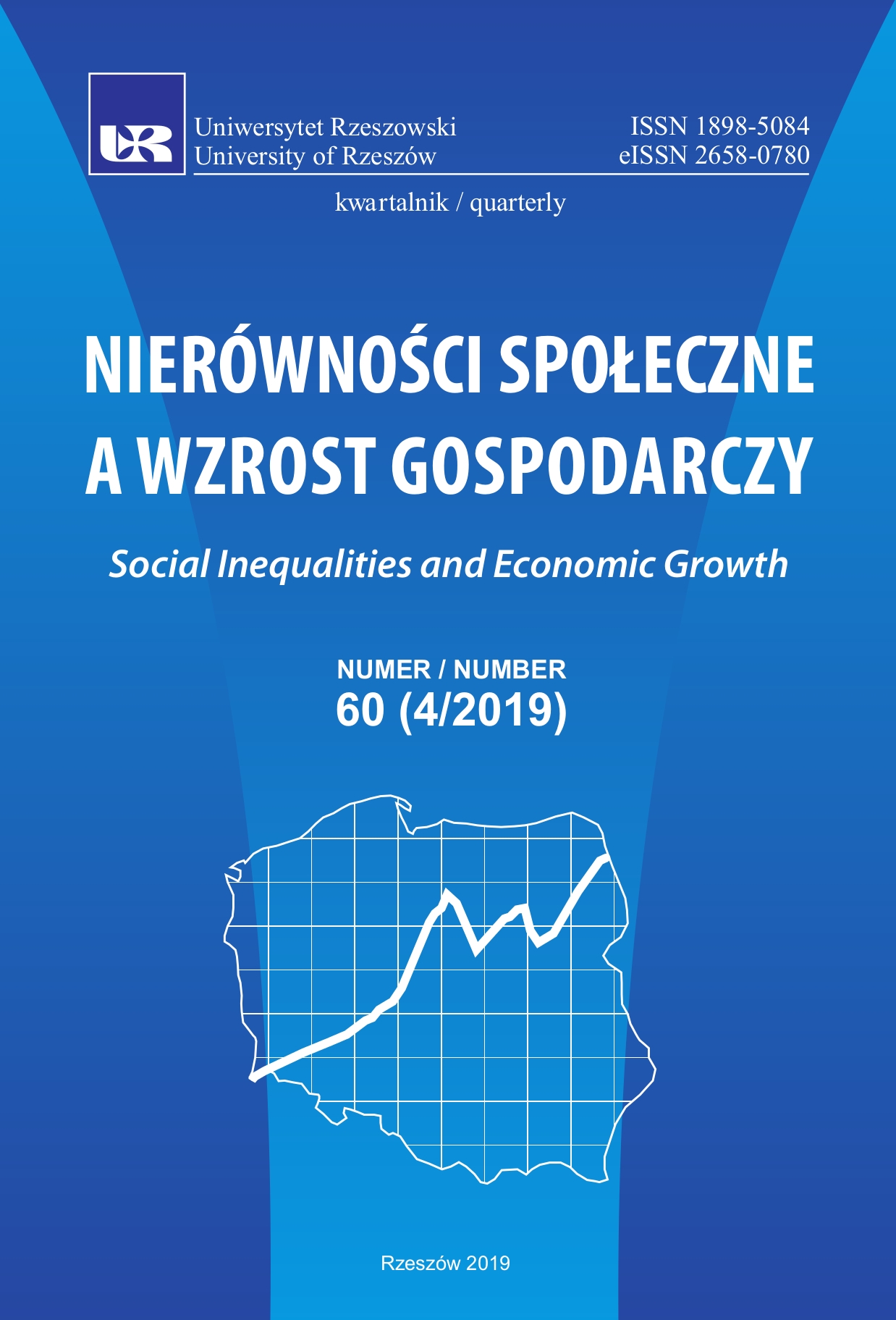Elastyczność japońskiego rynku pracy: 1960–2018
DOI:
https://doi.org/10.15584/nsawg.2019.4.8Słowa kluczowe:
rynek pracy, bezrobocie, Japonia, polityka gospodarcza, dopasowanie nakładu pracyAbstrakt
Artykuł podejmuje analizę japońskiego rynku pracy w okresie powojennym. Autorzy oferują nowatorski podział na podokresy w oparciu o sytuację makroekonomiczną. Systematyczny przegląd inicjatyw legislacyjnych ze strony rządu w reakcji na wątpliwe etycznie praktyki sektora prywatnego przynosi obraz gospodarki rozdzieranej walką o godne warunki pracy. Dążenie do osiągnięcia harmonii w społeczeństwie poprzez zwiększanie stabilności zatrudnienia doprowadziło do wytworzenia unikalnych praktyk zarządczych umożliwiających omijanie coraz sztywniejszych reguł japońskiego rynku pracy. Elastyczność rynku pracy redukowana była kolejnymi ustawami chroniącymi pracowników. W odpowiedzi na usztywnianie reguł zarządzania nakładem pracy, sektor prywatny wprowadził rozwiązania omijające niewygodne regulacje. Kilka dekad nieudolnych prób ochrony pracowników przez centrum rządowe przyniosło sytuację, w której ponad 40% wszystkich zatrudnionych pracuje w oparciu o niestandardowe kontrakty. Oznacza to, że pracę pełnoetatową wykonuje w Japonii coraz mniejsza grupa pracowników. Wywołuje to duże kontrowersje ze względu na brak tradycyjnych form ochrony pracowników (takich jak związki zawodowe) w przypadku tej frakcji na rynku pracy. Sytuacja ta odróżnia Japonię od pozostałych krajów wysokorozwiniętych. Wraz ze starzejącym się szybko społeczeństwem malejąca grupa pracowników pełnoetatowych tworzy zagrożenie dla stabilności systemu gospodarczego, w tym systemu emerytalnego.Downloads
Download data is not yet available.
Pobrania
Opublikowane
2020-11-13
Jak cytować
Masui, M., & Młodkowski, P. (2020). Elastyczność japońskiego rynku pracy: 1960–2018. Nierówności Społeczne a Wzrost Gospodarczy, 4(60), 115–143. https://doi.org/10.15584/nsawg.2019.4.8
Numer
Dział
Artykuły
Licencja
Prawa autorskie (c) 2019 Uniwersytet Rzeszowski

Utwór dostępny jest na licencji Creative Commons Uznanie autorstwa – Na tych samych warunkach 4.0 Miedzynarodowe.


